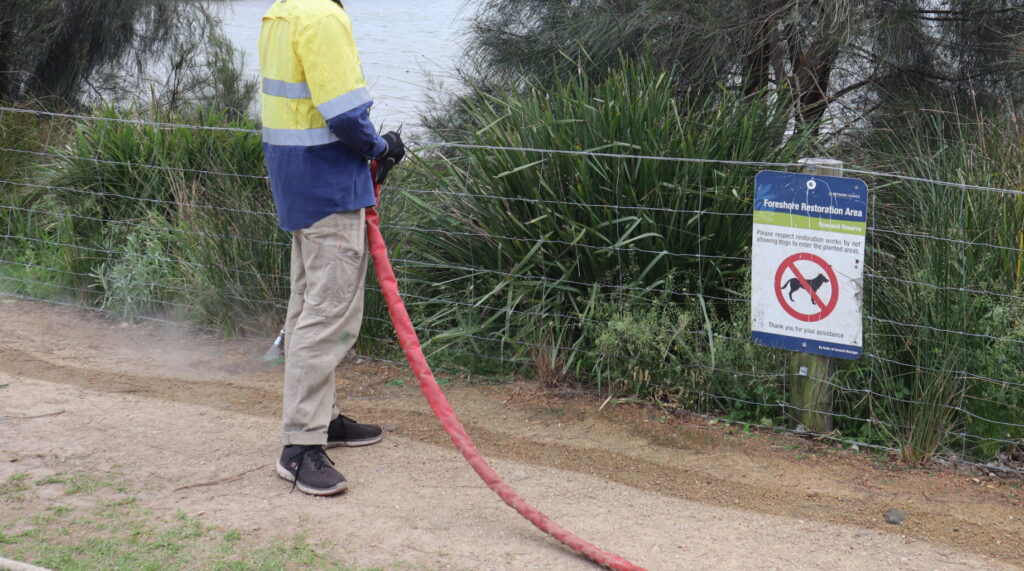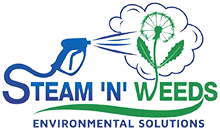FAQ - Have questions about Satusteam™?
Many of the following sectors have all made the switch to Satusteam™; governments, municipalities, universities, colleges, organic farmers, school districts, corporations and so on. In countries such as: Australia, USA, Canada, New Zealand, Africa, and South America.
Yes, the best time to treat weeds with Satusteam™ is soon after germination. This will give you the most bang for your buck and a thorough kill, however, you can treat at any time of the life cycle but the speed of application will vary. Check out our video for further details:
Put simply, for hydro-thermal weeding to be commercial viable, temperatures need to be greater than 98° Celsius, (205°F) and must have rapid transfer into the plant cells. Propane flame and Non saturated steam is less efficient at transferring destructive heat into the vegetation and simple hot water will do the job but is much slower and uses a lot more energy. You can rely on our SW range to superheat the water and deliver superheated saturated steam at 98-103°C, 205-218°F to destroy your weeds quickly and effectively. No additives required, just simply water.
There are a number of products in our SW range. Prices start under $18000 CAD and rise depending on operational output and the type and quantity of applicator heads required. There are numerious mounts available and fully customizable to the customers needs.
Our saturated steam provides rapid penetration and transfer of heat to any vegetation which the applicator heads pass over. It is non-selective on any organism. A benefit of our economical use of saturated steam and boiling water is that it does not penetrate more than about a ¼”, 5mm, into the soil. This has a great effect on the crowns of weed species but the little effect and no lasting impact on either the roots of your perennials crops, trees, vines, etc, or your important soil organisms. Earthworms tend to be found lower down in the soil profile unless there are very wet surface conditions. Our observation is that the destroyed weeds quickly become detritus providing food for a rapid repopulation of soil organisms which helps builds a humus layer in your soil.
To kill most plant pathogens and beneficial microbes such as Rhizobium bacteria and mycorryhizal populations the soil temperature must be “raised and held at between 60 – 80ºC for 30 minutes.” ( KA Hendreck & N. Black (1994 Revised Edition) Growing Media for Ornamental Plants and Turf. Randwick: University of NSW Press.) With our SW weed control on average only the top ¼”, 5mm of the soil directly under the head is heated for a couple of minutes.
The machines are manufactured to our specifications in California. The proprietary nozzles and heads are manufactured in Australia.
We have a network of service agents to match our distribution. Most problems can be solved with troubleshooting guidance over the telephone. Purchasers receive a detailed 12-month warranty with their Sales inquiry package.
A model for residential use is in development. Please click here to register for our newsletter and be the first to know when it is ready for market, plus get free access to our cost/benefit analysis of various weed management practices.
A back pack version poses some considerable design challenges. This is in development, we’ll keep you posted. Register with us to receive the updates, and like before, get free access to our cost/benefit analysis of various weed management practices.
The use of steam is suitable for many residential applications. Click here to keep updated on when we have a residential unit ready to go. In the meantime click here to visit our Weedtechnics contractors to find one who may be able to provide non-chemical weeding services in your area.
Repeated applications have proved that our SW range does not affect black plastic or any other weed control membranes.
Repeated applications have proved that our SW range does not affect any type of irrigation system with heat. Mechanical damage can be caused in certain circumstances, but the incidence is rare. We can assess your situation initially, by just emailing us a photo. Need more advice? Please contact us by email or call our office.
We have not found any soft wooded annual or perennial weed that is resistant to a good dose of our saturated steam and boiling water, however, there are many variable factors to consider when we help you design your weed management strategy. For example, are the weeds annuals or perennials, what stage in the growth cycle is the weed, do they have deep rhizomes, bulbs, or corms? Treated at the right time annuals can be eradicated after one treatment and perennials such as Bermuda grass (couch) Kikuyu, Dandelions require a programmed approach.
The 8 Hidden Costs of Chemical Weed Control.
Chemical weed killing may seem cost-effective in the short-term, but we’ve identified the following 8 hidden costs that you don’t experience with organic weed control. Read the whole article here.
Herbicide Resistance
Repeated applications of herbicides over many years has resulted in the evolution of many resistant species. This results in increased application rates and mixing of chemicals, which further damages surrounding ecosystems and increases costs. With our saturated steam weeders, the weeds become more susceptible to killing and reduces treatment frequency.
Employee Exposure
All chemical weed killers are toxins. Repeated employee exposure to known toxins drives up health and safety requirements, certification and record keeping costs. Thermal technology removes toxicology risks associated with chemical weed control products, particularly for horticultural and conservation workers.
Off-target Damage
Repeated applications of herbicides over many years has resulted in the evolution of many resistant species. This results in increased application rates and mixing of chemicals, which further damages surrounding ecosystems and increases costs. With our saturated steam weeders, the weeds become more susceptible to killing and reduces treatment frequency.
Tarnished Public Image
There is now widespread public knowledge about the hazard to human health of chemical weed killing. Chemical spraying by organisations will lead to a tarnishing of their public image and undermines their environment, safety and sustainability commitments.
Public Safety
Application of chemical weed killers, according to label, requires restriction of access to treated areas for a number of hours. This signage poses significant operational costs. Failure to restrict access can expose the public to 'probable carcinogens' and can lead to potential litigation.
Storm and Potable Water Contamination
Chemical weed killers translocate easily from paved surfaces, through soil profiles and can contaminate ground waters, streams, creeks and estuaries. Removing chemicals from drinking water sources creates enormous expenses.
Habitat, Ecosystem & Livestock Threat
Most commonly used weed killers have the potential to contaminate habitats of sensitive populations of endangered species such as frogs, bee's and butterfly's which are essential to healthy ecosystems. Chemical weed control that has the potential to contaminate fodder and water sources becomes a threat to livestock.
Soil Biology
The most commonly used weed killers are Glyphosate-based. Glyphosate is a patented antibiotic and chelator which has been shown to kill soil microbes and bind nutrients. This creates additional costs in soil remediation and fertilizing.

